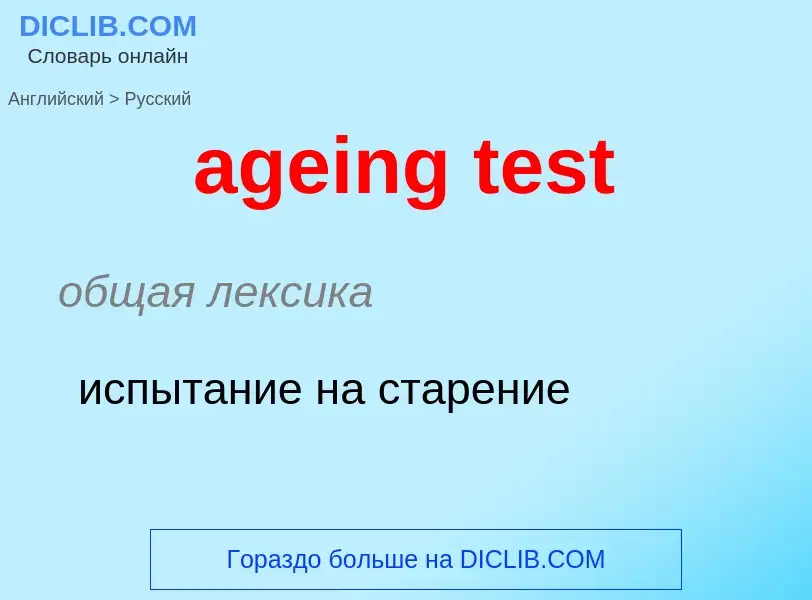Перевод и анализ слов искусственным интеллектом ChatGPT
На этой странице Вы можете получить подробный анализ слова или словосочетания, произведенный с помощью лучшей на сегодняшний день технологии искусственного интеллекта:
- как употребляется слово
- частота употребления
- используется оно чаще в устной или письменной речи
- варианты перевода слова
- примеры употребления (несколько фраз с переводом)
- этимология
ageing test - перевод на русский
общая лексика
испытание на старение
[septʃuədʒi'ne(ə)riən]
прилагательное
общая лексика
семидесятилетний
в возрасте между 70 и 79 годами
существительное
[septʃuədʒi'ne(ə)riən]
общая лексика
человек в возрасте семидесяти лет
человек в возрасте между 70 и 79 годами
2) с.-х. созревание
- ageing of population
- individual ageing
- partial ageing
- total ageing
общая лексика
процесс старения
технология выдерживания
Определение
Википедия
In software engineering, software aging is the tendency for software to fail or cause a system failure after running continuously for a certain time, or because of ongoing changes in systems surrounding the software. Software aging has several causes, including the inability of old software to adapt to changing needs or changing technology platforms, and the tendency of software patches to introduce further errors. As the software gets older it becomes less well-suited to its purpose and will eventually stop functioning as it should. Rebooting or reinstalling the software can act as a short-term fix. A proactive fault management method to deal with the software aging incident is software rejuvenation. This method can be classified as an environment diversity technique that usually is implemented through software rejuvenation agents (SRA).
The phenomenon was first identified by David Parnas, in an essay that explored what to do about it:
"Programs, like people, get old. We can't prevent aging, but we can understand its causes, take steps to limit its effects, temporarily reverse some of the damage it has caused, and prepare for the day when the software is no longer viable."
From both an academic and industrial point of view, the software aging phenomenon has increased. Recent research has focussed on clarifying its causes and effects. Memory bloating and leaking, along with data corruption and unreleased file-locks are particular causes of software aging.


![Comparison of a normal aged brain (left) and a brain affected by [[Alzheimer's disease]] Comparison of a normal aged brain (left) and a brain affected by [[Alzheimer's disease]]](https://commons.wikimedia.org/wiki/Special:FilePath/Alzheimer's disease brain comparison.jpg?width=200)
![Somali]] woman Somali]] woman](https://commons.wikimedia.org/wiki/Special:FilePath/Habibaadansalat.jpg?width=200)
![[[Christoffer Wilhelm Eckersberg]]: ''Ages of Man'' [[Christoffer Wilhelm Eckersberg]]: ''Ages of Man''](https://commons.wikimedia.org/wiki/Special:FilePath/Menneske Aldrene (C. W. Eckersberg).png?width=200)
